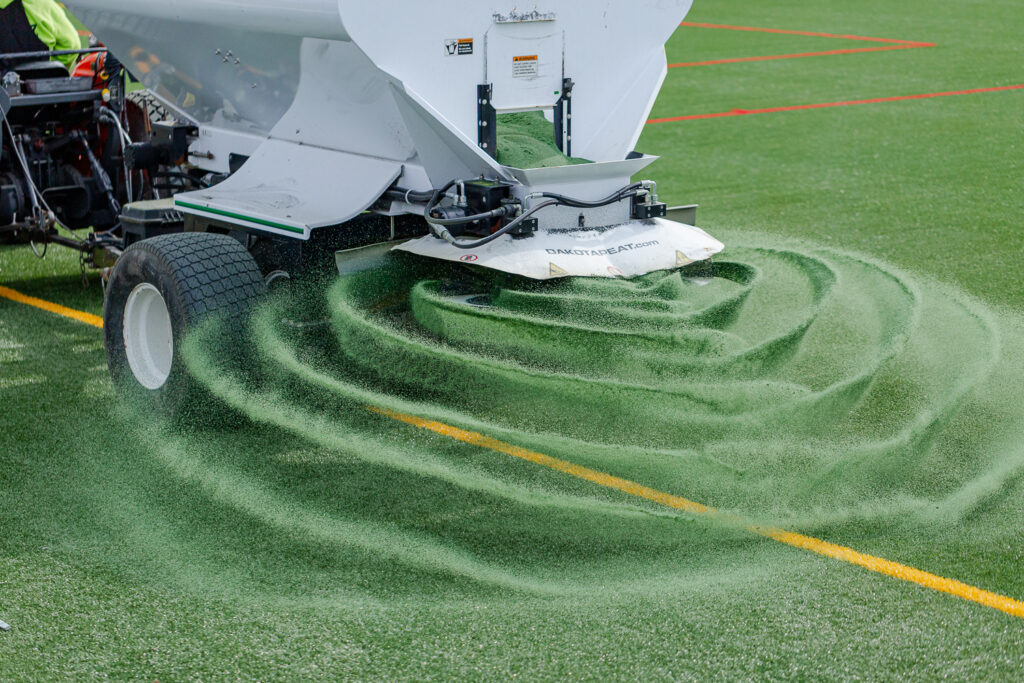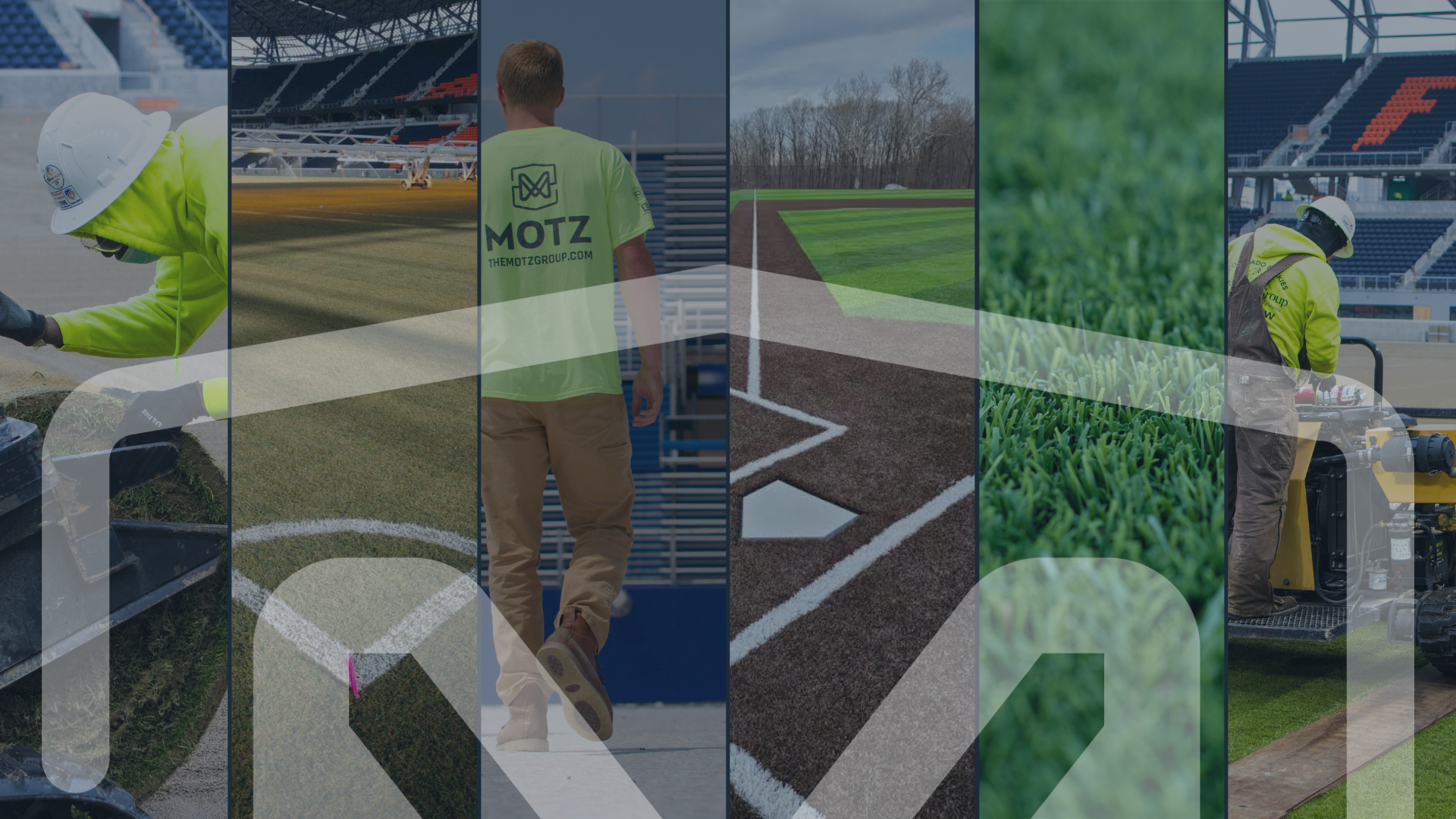
Sports Field Blog
Subscribe To Email Updates
Subscribe to our weekly newsletter and we’ll send updates straight to your inbox
ADA Accessibility Testing on Motz Synthetic Turf Infill Systems
Did you know there are an estimated 3.3 Million wheelchair users in the United States? That number is increasing every year. There are also tens of thousands of playgrounds throughout the United States. The problem though, not all these playgrounds are accessible by everyone.
There is a growing focus to ensure new playgrounds are ADA accessible and can be enjoyed by everyone, regardless of their mobility.
The American Society for Testing and Material’s test named ASTM F-1951 has emerged as a standard specification for determining accessibility of surface systems under and around playground equipment. This standard is a measure of force an individual must exert to propel a wheelchair across the surface. It includes both straight propulsion and turning movements. To pass this test, the force required to propel a wheelchair on the test surface must be less than the force required to propel a wheelchair up a ramp with a slope of 1:14. The test surface must achieve a ratio of 1.0 or less compared to the 1:14 sloped ramp.
There are countless options for playground and sports field surfaces to consider when designing. On the playground side these range from pour-in-place rubber, engineered wood fibers, recycled loose rubber “mulch,” and artificial grass. Within the artificial turf fibers there are numerous infill options. These include crumb rubber, raw sand, coated sand, walnut shells, EPDM, and TPE’s to name a few.
As seen in the photos below, synthetic turf is the more aesthetically pleasing option which explains why so many are opting for this. For sports fields, synthetic turf is the common replacement for natural grass.
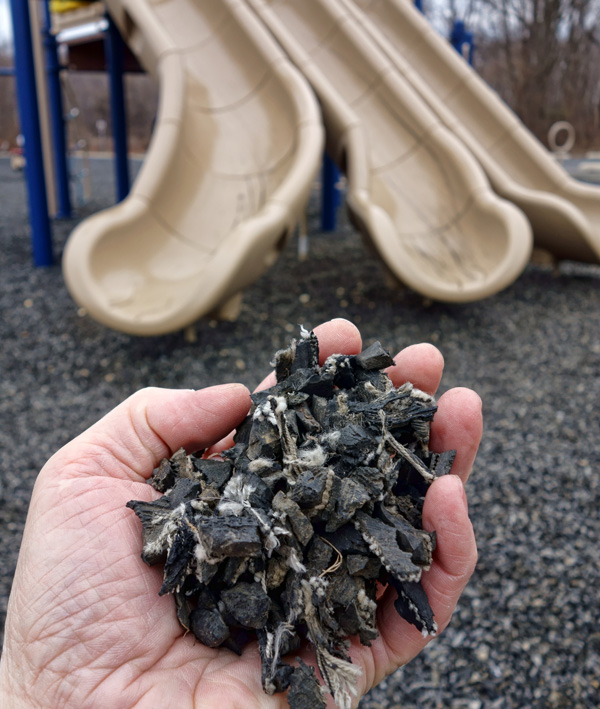
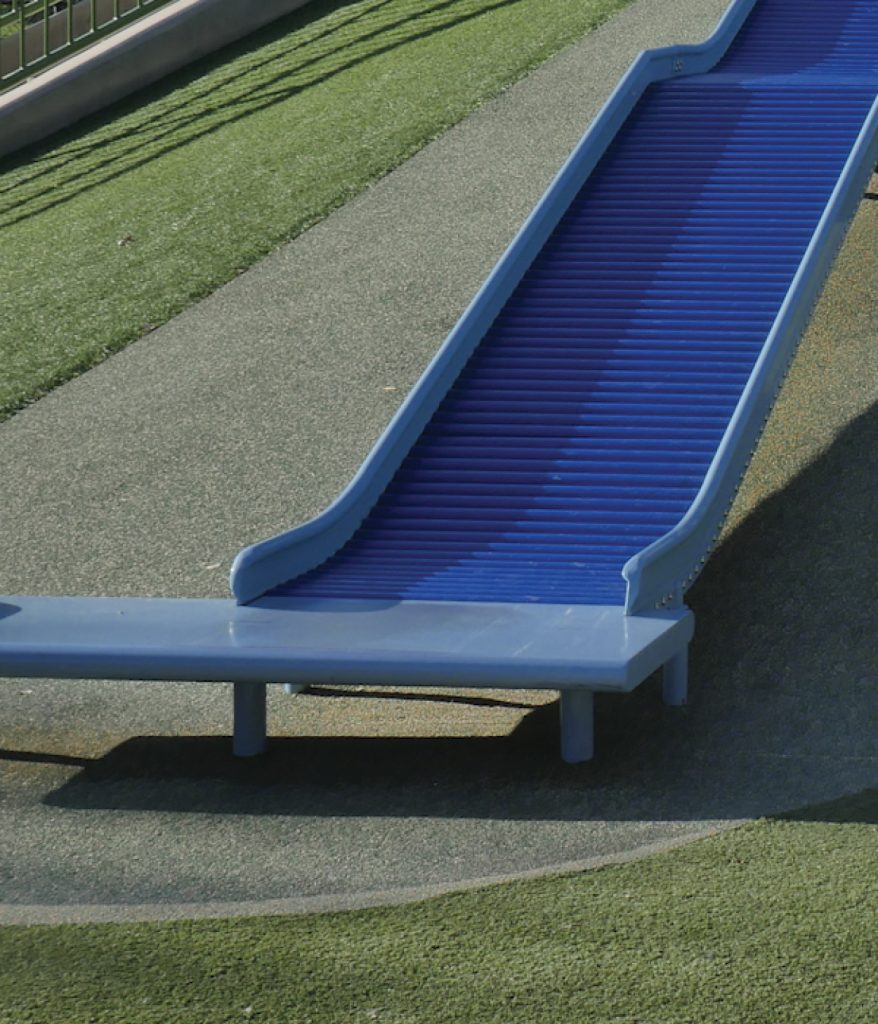
The infill type in synthetic turf will play a major role in the surface interaction, be it an athlete’s cleat, a kid’s gym sneaker, or even a wheelchair’s wheel. It’s important to select a turf infill that will address nearly every concern ranging from performance aspects to durability characteristics and more recently accessibility by all.
Back to the ASTM test mentioned earlier, we work closely with third party ISO-certified lab testing partners. Motz’s two infill offerings, Envirofill and Safeshell, were ADA lab-tested in our recommended sports turf specification. The results show both infills pass with scores significantly under the 1.0 testing limit, indicating they are optimal infills for surfaces with ADA requirements. Envirofill scored 0.31 straight propulsion and 0.62 turning with Safeshell scoring 0.11 straight propulsion and 0.36 turning.
Any surface scoring below a ratio of 1.0 is considered a pass, but are all “passes” equal? Sure a 0.9 and a 0.2 are both passing grades, but a 0.2 is in fact better than a 0.9. This lower score means less force is required to propel a wheelchair compared to the higher score. If you design a firm turf surface it will typically result in a lower test score (lower ratio) and ultimately indicate a more accessible surface. Don’t assume your synthetic turf playground or field cannot cover all the bases.
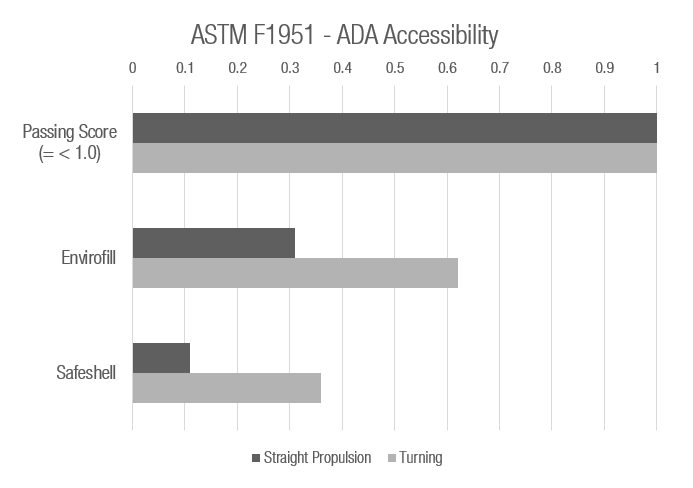
Check out our infill lineup or more detailed testing results by signing up for our portal. We offer firm, fast, and safe infill options for your next project to make sure it is inclusive to all!
Similar Blogs

